T1D Guide
T1D Strong News
Personal Stories
Resources
T1D Misdiagnosis
T1D Early Detection
Research/Clinical Trials
Kennedy’s Type 1 Diabetes Journey and Her Lifesaving Alert Dog, Kona
The Berce family gained an incredible gift the year before their daughter, Kennedy, was diagnosed with type 1 diabetes. They didn’t know it at the time, but the Portuguese water pup they adopted would become a lifesaving alert dog.
.jpg)
Meet the Berce Family
With no family history of type 1 diabetes (T1D), Kennedy faced a long, hard road to a correct diagnosis. It was a terrifying year for her parents, as Kennedy spent much of age four experiencing complex seizures and by the time she turned five, she began passing out.
The Berces were completely blindsided, and her condition baffled doctors. They met with cardiologists and neurologists, and all her test results came back clear.
Then she started exhibiting even stranger symptoms, wetting the bed, extreme thirst and lethargy, along with having trouble concentrating in school—all unusual for Kennedy.
“Kennedy also had cuts and bruises that wouldn’t heal,” said Mom, Lindsey. “That whole year, all the tests were coming back clean, and everyone kept telling me you’ve got to let this go, like I was crazy, but I knew something was wrong.”
It took several months for Kennedy to receive the correct diagnosis. Suspecting a urinary tract infection (UTI), Lindsey urged Kennedy’s healthcare team to run a urine test, which showed elevated glucose levels.
At age six on September 22, 2024, doctors assessed that she had slow-onset type 1 diabetes, and the seizures she had been experiencing (all of which happened after extreme exercise) were due to hypoglycemic (low blood sugar) episodes.
“It was sad news, but at least she’s healthy now,” said Lindsey.
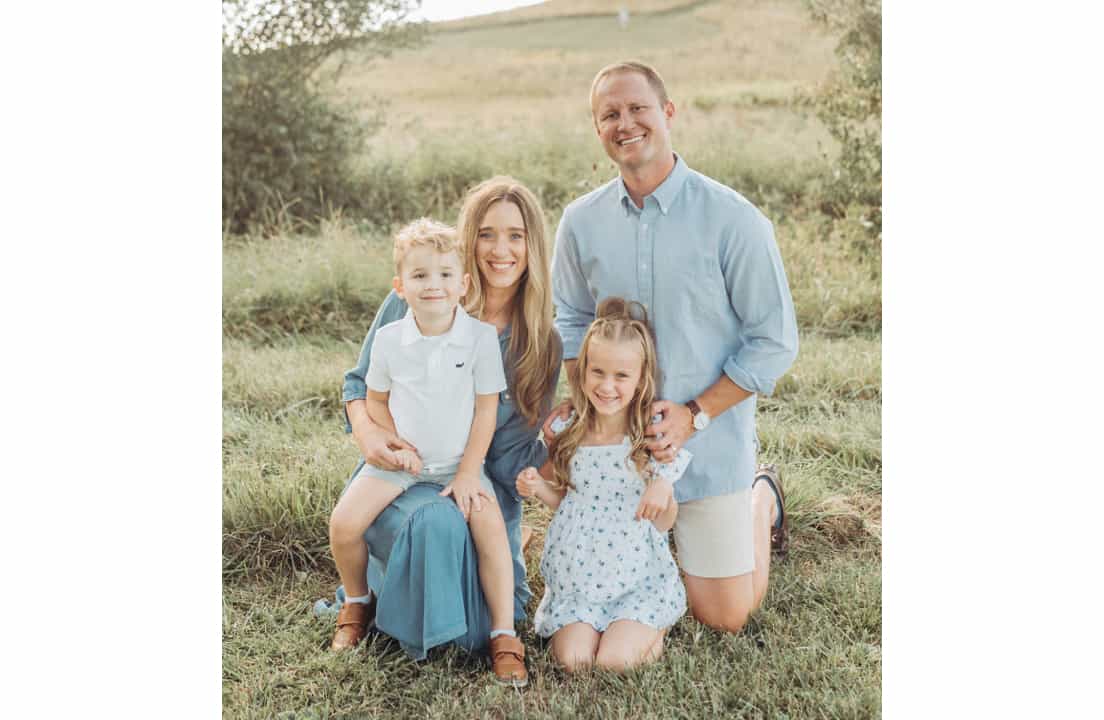
From Pup to Protector: Meet Kona
A year earlier, the Berces welcomed a new addition to their family – a Portuguese water dog (PWD), named Kona, initially for their son Cameron. They adopted Kona from the Portie Club PWD, a breeder based in Mount Vernon, Ohio.
But the Berces quickly noticed something unusual: Kona followed Kennedy everywhere and often licked her face.
“We had him as a puppy when she was full-blown T1D,” said Lindsey. “He was just obsessed with her and wanted nothing to do with my son. Another red flag, we had to pull him off of her at times, and looking back, obviously he could smell the high blood sugars.”
They now believe Kennedy was probably in her honeymoon phase, which refers to a period when the body still produces some insulin and blood glucose numbers are still somewhat within range.
When her diagnosis became clear—that Kennedy had type 1, they decided to train Kona, whom they already believed had a sixth sense about Kennedy’s blood sugar, to be an alert service dog.
They found MerakiK9, certified professional alert dog trainers, located in SE Michigan.
Trained to Save: How Kona Became a Life Saving Pet
You might think that since Kona already exhibited prolific traits in sensing blood sugars, it would be a quick learning process. Still, the reality of training a lifesaving alert dog is much more detailed.
“Kona was six months old, and we read that you only have until nine or ten months with a dog to really impact their training, any older than that and you’ve missed your window,” said Lindsey.
Portuguese water dogs, though highly intelligent and kid-friendly, are not a breed that is used for service dogs very often, so he was accepted on a trial basis.
The trainer was so impressed by his ability to recognize Kennedy’s scent that she kept him for three months. Once Kona returned home, Lindsey started videotaping him to show their trainer.
Kennedy’s T1D Challenge: Hypoglycemic Unawareness
One dangerous aspect some T1Ds experience is hypoglycemic unawareness, a condition where a person with diabetes doesn’t feel the typical warning symptoms of low blood sugar (shakiness, sweating, dizziness and confusion). Continuous glucose monitors (CGMs) and alert dogs are often used to manage the risks.
Kennedy has hypo-unawareness, so she doesn’t feel her symptoms. “She’d be talking to me with a blood sugar of 40, doing cartwheels in the yard, and have no idea, she was dropping,” Lindsey said. “In these cases, Kona really is saving her life; there have been several lows we just wouldn’t have caught.”
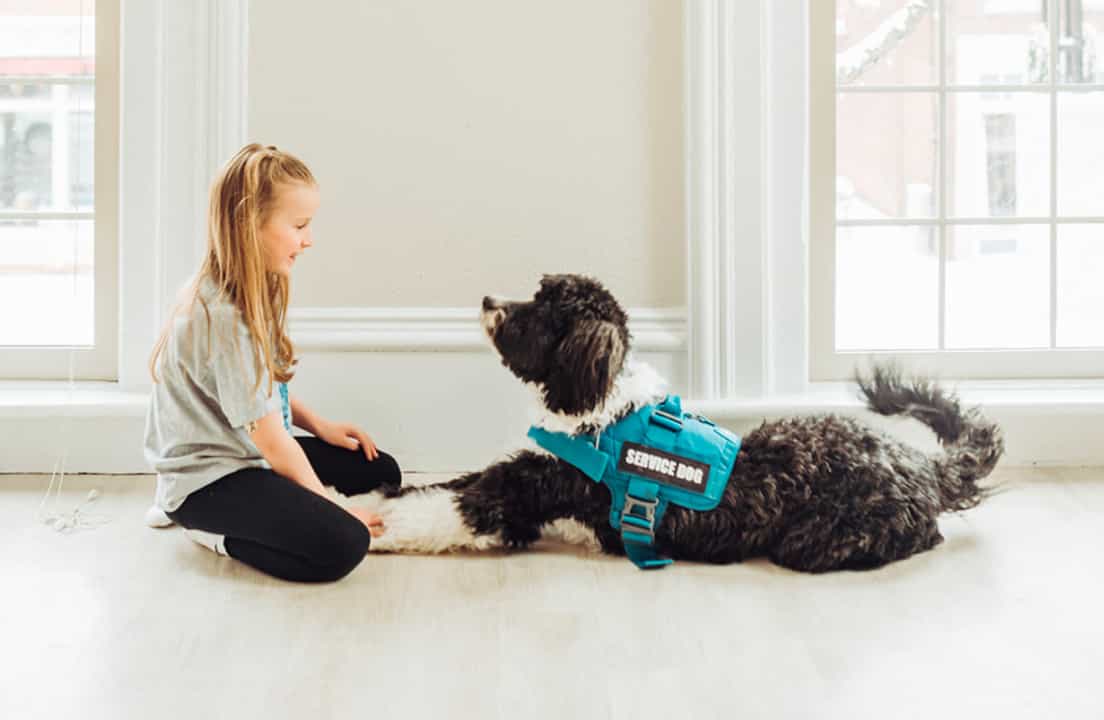
Kona Beats Diabetes Tech
The Berces soon began to notice that Kona beat Kennedy’s Dexcom CGM by 30 minutes—every single time. “At first, we questioned him,” Lindsey said. “But then we realized he was 30 to 40 minutes ahead of the actual glucose reading technology.”
The Berces use a blood glucose meter (BGM) to confirm Kona’s alerts.
It’s not only timing where Kona marvels—it’s distance. Kona can signal Kennedy’s low blood sugars from over 90 feet away. Once Kennedy was up in her bedroom on a different level in the house, and Kona locked eyes with Lindsey. “It doesn’t matter if I’m in the shower or outside, he’ll make sure we know.”
Kona alerts when Kennedy’s levels fall below 75 or go above 145.
After locking eyes, he begins pacing and shaking his head or gently placing his paw on Kennedy. The Berces are incredibly grateful for these lifesaving alerts. “Kona brings so much good into our lives,” said Lindsey. “He lightens the mood and gives me something to focus on besides diabetes.”
Social Media Beginnings & Diabetes Stigmas
As Lindsey began documenting Kona’s progress for the training, she started sharing their experience on social media (@kennedyst1djourney on TikTok and Instagram).
As amazing as Kona is, Lindsey wanted to make others aware of T1D symptoms so they may learn from their long battle to a diagnosis—and to dispel some of the stigmas around type 1 diabetes.
“I didn’t realize how much people didn’t know about T1D,” said Lindsey. “I didn’t know a lot. The comments are where you see all the misconceptions: ‘She’ll grow out of it,’ or ‘Did you feed her too much sugar?’”
“So I had Kona, and I thought I could show people how diabetes really is; hoping someone might learn something,” Lindsey added.
As of the date of this article, Kona videos have received over 1.1 million views.
“I think service dogs just need a little bit more credibility,” Lindsey said. “Also, I want people to see that type 1 diabetes isn’t all negative.”
Additionally, Lindsey sees positive comments. “I think a lot of people just didn’t realize how powerful these dogs are. They say, ‘He’s like a guardian angel.’ And others commented with positive reinforcement, ‘You’re doing a great job, Mom. Hang in there.’”
“I need that because I’m the one waking up for the alerts, checking her blood sugar,” Lindsey said. “I don’t want her to be burdened with that yet, I still want her to be six.”
“Also, it’s important people see I don’t solely rely on Kona, I still take care of Kennedy,” said Lindsey. “I don’t want people to think just because you have a dog, you’re going to catch every single alert; dogs are still dogs at the end of the day.”
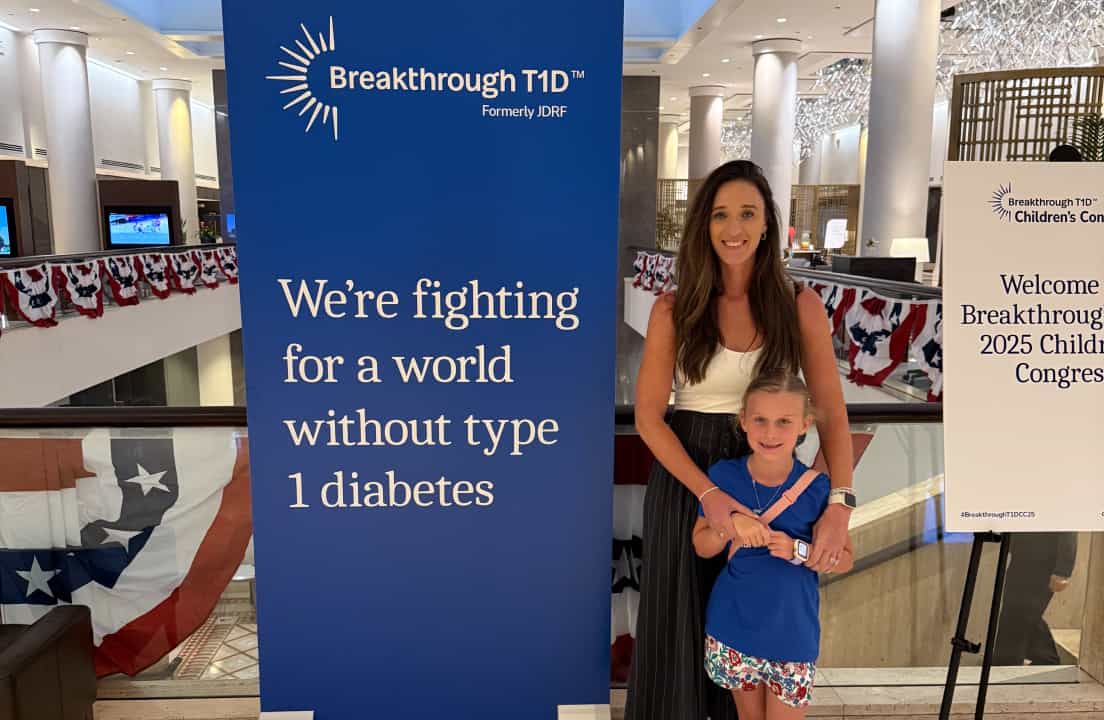
T1D Moms
“My T1D Moms online support group is the only reason I’m still afloat. I have every answer given back to me immediately. Some mom is always there to help; it’s the main reason I’ve made it this far.”
When Kennedy was first diagnosed, Lindsey said that for the first year, they would say yes to every diabetes event just to see where they fit and to show Kennedy that she was not alone.
The diabetes online community has uplifted and inspired the Berce family to get more involved.
They applied to Breakthrough T1Ds Children’s Congress, and Kennedy was chosen to represent Ohio.
“We were in the live senate hearing to renew the Special Diabetes Program (SDP) with Senator Collins. It was amazing to see all the kids asking for it to be funded.”
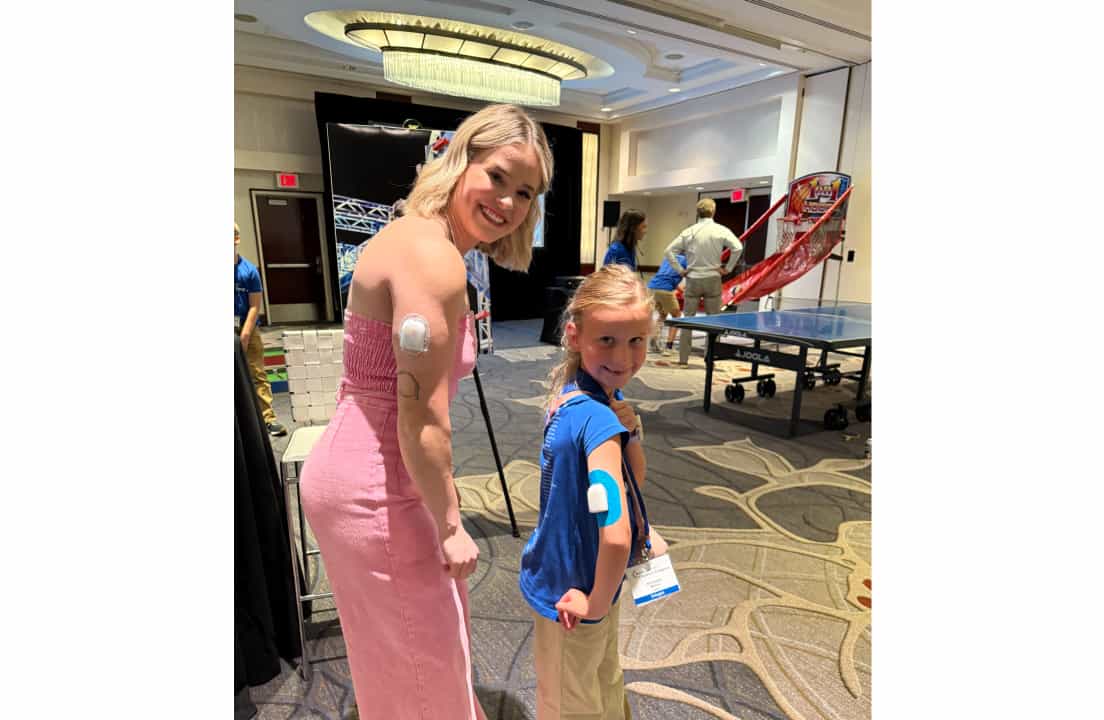
The children also got to meet some T1D celebrities, including Ninja Warrior, Katie Bone, (in picture above), an international supermodel, Bambi Northwood-Blyth, Breakthrough T1D’s CEO, Aaron J. Kowalski, and Mattel with the new T1D Barbie.

Advice to Newly Diagnosed Parents
“I think first, it’s finding your people, finding your community,” said Lindsey. “The online community is where I found mine, but other T1D moms have found theirs through TikTok, or Breakthrough T1D. No one gets it unless you live it. I saw that at the Children’s Congress, Kennedy turned around and looked at me, and I could tell she was thinking, ‘There are 100 kids here just like me.’ And I think she was like, ‘I found my people.’”



.webp)





.webp)
.jpg)

.jpg)

.jpg)
.jpg)
.jpg)
.jpg)

.jpg)
.jpg)

.jpg)
.jpg)
.jpg)

.jpg)
.jpg)


.jpg)
.jpg)
.jpg)
.jpg)
.jpg)


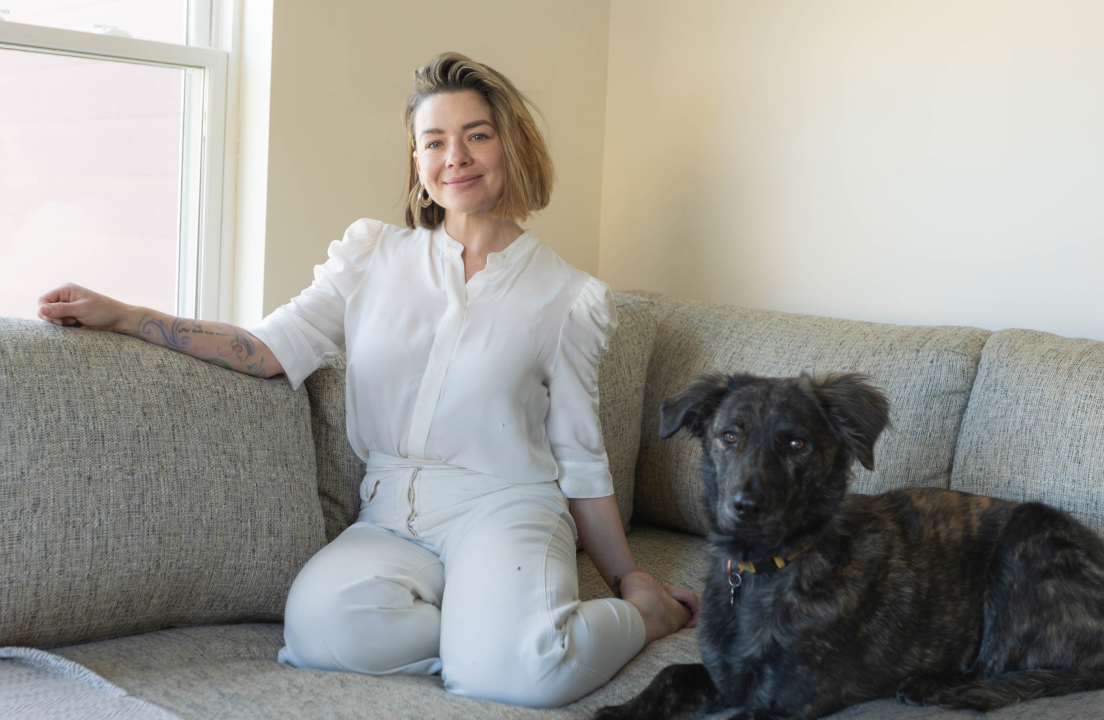










.jpg)


.jpg)













.webp)





%20(1).png)




.jpeg)






.jpg)









.jpg)
.webp)




























.webp)